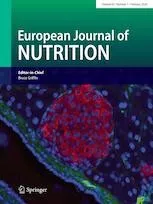Dr. Paulina Wasserfurth, Dr. Frank Huelsemann, and Prof. Dr. Karsten Koehler just recently published their newest article titled “Changes in urinary stable nitrogen isotope ratios during controlled short-term energy deficit: a proof-of-principle analysis.”.
The study aimed to understand how an energy deficit impacts the ratio of naturally occurring stable nitrogen isotopes. Earlier research indicated that periods of catabolism are associated with an increase in the ratio of the heavy 15N isotope and the lighter 14N isotope. However, till this date analysis were only performed using human hair, which only allows retrospective analysis with a resolution of days to weeks. In the present analysis, the researchers analyzed nitrogen isotopes from urinary urea, which allows more timely resolution. They hypothesized that the isotope ratio would increase during an energy deficit, indicating increased rates of AA oxidation in the energy-deficient state.
To test the hypothesis, researchers analyzed samples from a previously published crossover study, during which six healthy male participants went through two 4-day periods of energy deficit (either with aerobic exercise or no exercise) and two 4-day control periods with normal energy balance (either with aerobic exercise or no exercise).
The analysis revealed that the isotope ratio of urinary urea indeed increased in response to an energy deficit.. The increase is suggested to be due to increased amino acid oxidation and the preferential elimination of the lighter 14N isotopes in the liver, indicating increased demand for substrates to meet the energy demands during an energy deficit. Therefore, changes nitrogen isotope ratios could potentially reflect the catabolic state of the body.
Understanding how the body uses protein during periods of low energy intake is crucial, especially for those at risk of losing muscle mass due to rapid weight loss or certain illnesses. The study suggests that measuring nitrogen isotopes in urine could provide valuable insights into the metabolic changes associated with energy deficits and may have implications for monitoring nutritional status and metabolic health in clinical settings.
For a deeper dive into the study and a more detailed analysis, you can access the full research article here.
